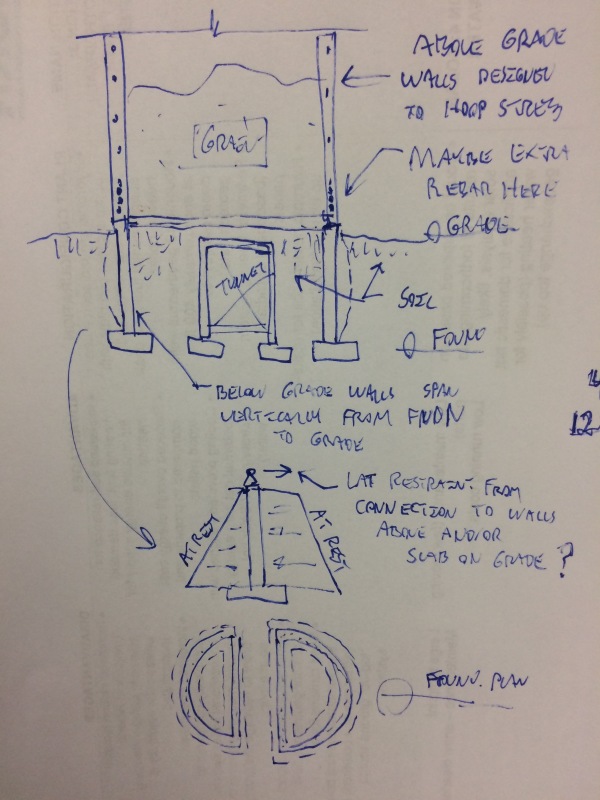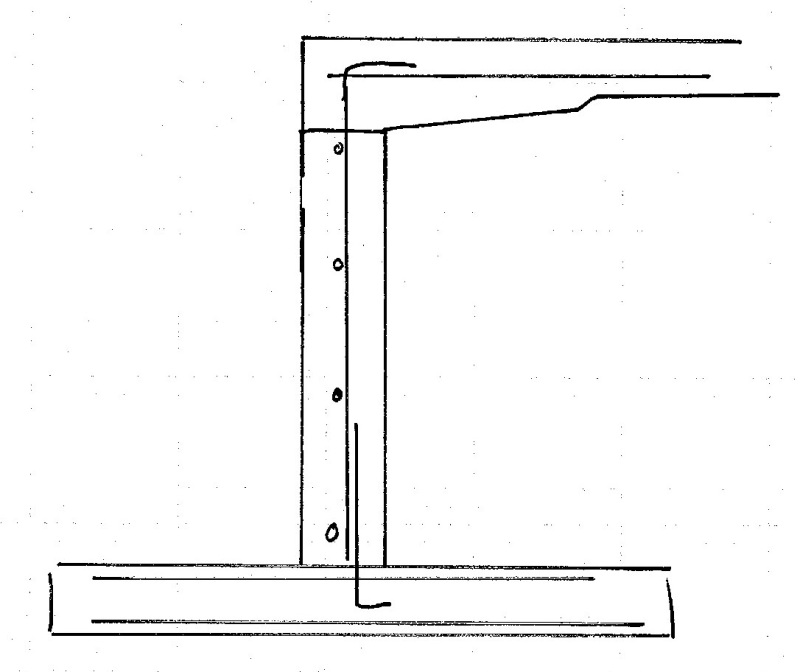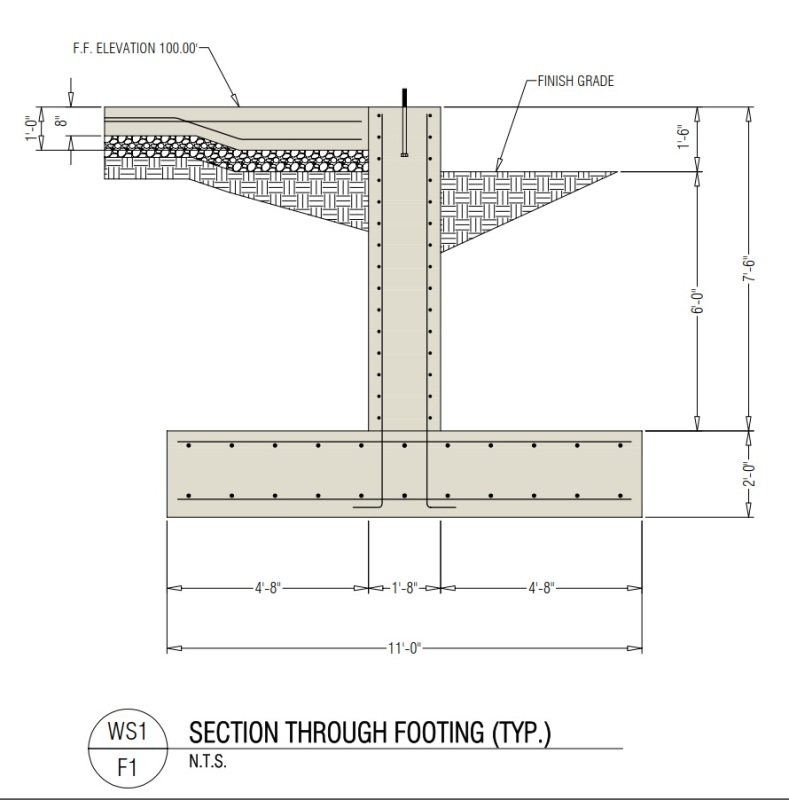I am working on the foundation design for a large grain bin (90' dia. x 120' tall). Due to the high loads and the fact that there is a tunnel running through the center of the tank I am going to use an inverted "T" foundation. This will allow me to get the footing down to bedrock where I will have a much higher bearing capacity (6 tsf), and with the taller foundation stem wall (7'-6"), I can pass the access hole for the tunnel entirely through the stem wall without interrupting the ring footing.
I am curious about what is common design practice when it comes to handling the outward thrust on the stem wall from the grain surcharge. From what I see I can handle it two ways, either design the inverted "T" foundation as a retaining wall, or size hoop steel in the stem wall to carry all the hoop tension. Perhaps a combination of the two (belt and suspenders)? I realize the hoop steel would have to pass through the headers over the tunnel on either side of the tank in order to remain continuous, bar laps would have to be staggered, etc. Any references that specifically address this design would be welcome too. Also, if there are any other design nuances I should be aware of feel free to chime in. Thank you in advance!
I am curious about what is common design practice when it comes to handling the outward thrust on the stem wall from the grain surcharge. From what I see I can handle it two ways, either design the inverted "T" foundation as a retaining wall, or size hoop steel in the stem wall to carry all the hoop tension. Perhaps a combination of the two (belt and suspenders)? I realize the hoop steel would have to pass through the headers over the tunnel on either side of the tank in order to remain continuous, bar laps would have to be staggered, etc. Any references that specifically address this design would be welcome too. Also, if there are any other design nuances I should be aware of feel free to chime in. Thank you in advance!




![[wink] [wink] [wink]](/data/assets/smilies/wink.gif) .
.![[ponder] [ponder] [ponder]](/data/assets/smilies/ponder.gif) ). The surcharge is pushing down on the heel too don't forget. Does the tunnel go all the way through or just to the center? I keep imagining it goes through.
). The surcharge is pushing down on the heel too don't forget. Does the tunnel go all the way through or just to the center? I keep imagining it goes through.![[curse] [curse] [curse]](/data/assets/smilies/curse.gif)
![[thumbsup2] [thumbsup2] [thumbsup2]](/data/assets/smilies/thumbsup2.gif) . Perhaps I am up too late as well. I do hate to keep you from your work though.
. Perhaps I am up too late as well. I do hate to keep you from your work though.